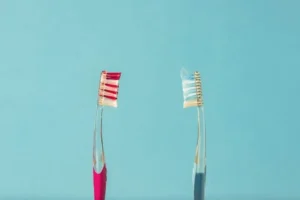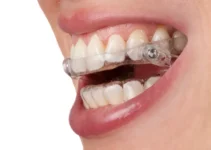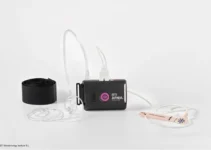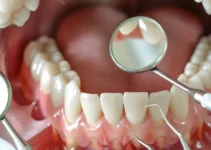Choosing the right toothbrush for braces is crucial for maintaining oral hygiene and ensuring the longevity of orthodontic treatment. Braces can trap food particles and bacteria, leading to a higher risk of dental issues if not properly cleaned. This article explores various toothbrush types specifically designed for braces, including features like soft bristles and small heads that are effective at navigating around brackets and wires. We’ll also provide tips on brushing techniques that can help protect your orthodontic investment and keep your smile healthy.
Why Using a Special Toothbrush For Braces Matters
When you have braces, maintaining oral hygiene can become quite challenging. Using a special toothbrush designed specifically for braces is a critical component in ensuring that your teeth remain clean and healthy throughout your orthodontic treatment. These toothbrushes are engineered to clean effectively around brackets and wires, reaching areas that standard toothbrushes cannot. Therefore, investing in a special toothbrush for braces can offer significant benefits for your oral health.
Furthermore, braces create numerous nooks and crannies where food particles and plaque can accumulate. This accumulation, if not properly managed, can lead to various dental issues, including cavities and gum disease. Special toothbrushes are designed to combat these problems, making them an essential tool in your oral hygiene arsenal.
Prevents Plaque Build-Up
One of the most significant advantages of using a special toothbrush for braces is its ability to prevent plaque build-up. Plaque is a sticky, colorless film of bacteria that forms on your teeth. If not removed, plaque can harden into tartar, which can only be removed by a dentist. Tartar build-up can lead to more severe dental issues, including cavities and gum disease.
Special toothbrushes for braces often feature unique bristle designs that can navigate around brackets and wires, effectively removing plaque from hard-to-reach areas. This ensures that your teeth and braces remain clean and free from harmful bacteria. Moreover, these toothbrushes come with options like interdental brushes that can reach between teeth and braces wires, offering a more comprehensive cleaning solution. This specialized care helps in minimizing the risk of plaque build-up, thereby safeguarding your oral health throughout your orthodontic treatment.
Promotes Healthy Gums
Another crucial benefit of using a special toothbrush for braces is that it promotes healthy gums. Gums can become particularly sensitive and prone to inflammation when you wear braces. Regular toothbrushes may not be able to clean adequately around the gumline, increasing the risk of gingivitis and other gum diseases.
Special toothbrushes for braces typically have softer bristles designed to be gentle on your gums while still providing an effective clean. This helps in removing the plaque and food particles that can irritate your gums and cause inflammation.
Additionally, some of these toothbrushes come with angled heads that make it easier to reach the gumline and clean it thoroughly. By promoting healthy gums, these specialized toothbrushes contribute to your overall oral health and well-being.
Using a special toothbrush for braces is not just a convenience—it’s a necessity for maintaining optimal oral hygiene. For more detailed articles on oral health and dental care, feel free to explore our other posts.
Types of Toothbrushes Suitable for Braces
Choosing the right toothbrush is essential for maintaining excellent oral hygiene, especially when you have braces. Braces introduce additional challenges in keeping your teeth and gums clean, as food particles and plaque can easily become trapped around the brackets and wires. Therefore, investing in the right type of toothbrush can make a significant difference in your dental health during orthodontic treatment.
Various types of toothbrushes are available to meet the specific needs of individuals with braces. This article will explore the benefits and drawbacks of manual toothbrushes, electric toothbrushes, and interdental brushes. By understanding these options, you can make an informed decision and ensure your oral health remains in top condition.
Manual Toothbrushes
Manual toothbrushes have been a staple in oral hygiene for decades. They are widely available, affordable, and easy to use. When selecting a manual toothbrush for braces, look for one with soft bristles and a small head. Soft bristles are gentle on both the brackets and gums, reducing the risk of damage and irritation. A smaller brush head can navigate around the brackets and wires more easily, ensuring thorough cleaning.
Using a manual toothbrush requires proper technique to achieve effective results. Hold the toothbrush at a 45-degree angle to your gums and use gentle, circular motions. Clean each tooth individually, paying extra attention to the areas around the brackets. Manual toothbrushes also allow you to control the pressure you apply, reducing the chance of damaging your braces.
Electric Toothbrushes
Electric toothbrushes have gained popularity due to their efficacy and convenience. These toothbrushes come with various features such as different brushing modes, timers, and pressure sensors. For individuals with braces, electric toothbrushes can be particularly beneficial because their oscillating and vibrating bristle movements can remove plaque more effectively than manual brushing.
Research has shown that electric toothbrushes can lead to better plaque removal and healthier gums compared to manual toothbrushes. The oscillating and pulsating movements help dislodge food particles and plaque from hard-to-reach areas around braces. Many electric toothbrushes also have smaller brush heads designed to navigate around orthodontic appliances. When choosing an electric toothbrush, consider models specifically designed for braces. These often come with specialized brush heads and settings tailored for orthodontic care. The convenience and enhanced cleaning capabilities of electric toothbrushes make them an excellent choice for maintaining oral hygiene with braces.
Interdental Brushes
Interdental brushes, also known as proxabrushes, are small brushes designed to clean between teeth and around braces. These brushes are highly effective in removing plaque and food particles from areas that regular toothbrushes might miss. They are especially useful for cleaning the spaces between brackets and wires, which are prone to plaque buildup.
Interdental brushes come in various sizes to fit different gaps between teeth. When choosing an interdental brush, ensure it is the appropriate size for your braces. Using an interdental brush is straightforward—insert the brush gently between the teeth and around the brackets, and move it back and forth to remove debris.
Studies have demonstrated that interdental brushes can significantly reduce plaque and improve gum health, making them a valuable addition to your oral hygiene routine. Incorporating these brushes into your daily cleaning regimen can help maintain a cleaner and healthier mouth during orthodontic treatment.
In conclusion, selecting the right toothbrush is crucial for maintaining optimal oral health with braces. Whether you choose a manual toothbrush, an electric toothbrush, or interdental brushes, each offers unique advantages to keep your teeth and gums in excellent condition. Explore other articles on our website to learn more about maintaining dental health during orthodontic treatment and other oral care tips.
Tips for Effective Braces Cleaning
Keeping your braces clean is crucial for maintaining oral health and ensuring the effectiveness of your orthodontic treatment. Braces create numerous nooks and crannies where food particles and plaque can accumulate, making it essential to adopt a rigorous cleaning routine. By following some simple yet effective tips, you can keep your braces and teeth in optimal condition throughout your treatment period.
Failure to maintain proper oral hygiene while wearing braces can lead to issues such as cavities, gum disease, and even decalcification of the teeth. Therefore, it is important to incorporate certain habits and products into your daily routine to prevent these problems and keep your smile healthy and bright.
Brush After Every Meal
One of the most important tips for maintaining clean braces is to brush your teeth after every meal. This helps to remove food particles and plaque that accumulate on and around the brackets and wires. Use a toothbrush with soft bristles to avoid damaging the braces and ensure you reach all areas of your mouth.
Electric toothbrushes can be particularly beneficial as they provide a more thorough cleaning compared to manual brushing. Make sure you spend at least two minutes brushing, covering all surfaces of your teeth, brackets, and wires.
It’s also a good idea to carry a travel-sized toothbrush and toothpaste with you, so you can brush your teeth even when you’re not at home. If brushing immediately after eating is not possible, rinsing your mouth with water can help remove some food particles and reduce the risk of plaque buildup.
Use Fluoride Toothpaste
Using fluoride toothpaste is essential for individuals with braces as it helps to strengthen the enamel and prevent cavities. Fluoride works by remineralizing the enamel, making it more resistant to acid attacks from bacteria in the mouth. Choose a toothpaste that contains an appropriate amount of fluoride, as recommended by dental professionals.
In addition to brushing, consider incorporating a fluoride mouthwash into your daily routine for added protection. This can help reach areas that may be difficult to clean with a toothbrush alone, providing a more comprehensive approach to oral hygiene.
It’s also beneficial to use an interdental brush or floss threader to clean between the wires and teeth, where regular toothbrushes might not reach effectively. This ensures that no areas are missed during your cleaning routine, reducing the risk of tooth decay and gum disease.
For more insightful tips and advice on maintaining optimal oral health during orthodontic treatment, be sure to explore our other articles. Your journey to a perfect smile doesn’t end here—there’s always more to learn and apply!
Essential FAQ: Choosing the Right Toothbrush for Braces
When wearing braces, maintaining optimal oral hygiene can be challenging. Selecting the appropriate toothbrush is crucial for effective cleaning. Here are frequently asked questions to help you make the best choice.
What type of toothbrush is best for cleaning braces?
For those with braces, an orthodontic toothbrush or a soft-bristled electric toothbrush is highly recommended. Orthodontic toothbrushes are specially designed with V-shaped bristles that effectively clean around the wires and brackets. Electric toothbrushes with small, round heads are also effective as they offer precise cleaning around orthodontic appliances and can reduce plaque buildup more efficiently than manual brushes.
How often should I replace my toothbrush when I have braces?
It’s advisable to replace your toothbrush more frequently if you wear braces — about every two to three months, or sooner if the bristles become frayed. Braces can cause additional wear and tear on the bristles, making them less effective in cleaning teeth and orthodontic components thoroughly.

My name is Salman Kapa, a 73-year-old expert in bone regeneration and dental implantology. With decades of experience in the field, I am dedicated to advancing our understanding of oral health and hygiene. Through my research and writing, I aim to contribute to the development of innovative solutions in dental care.




